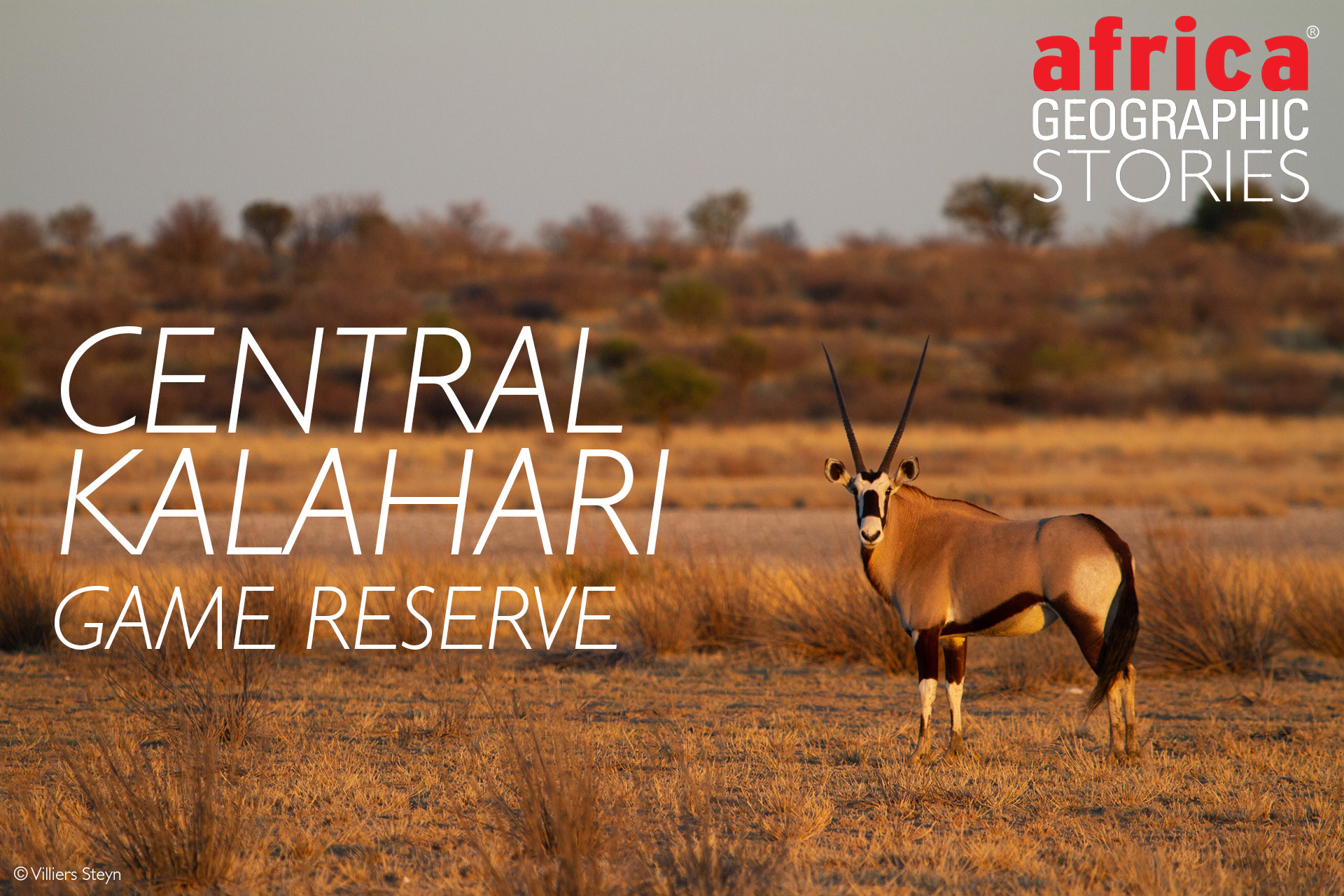
VAST, REMOTE & TIMELESS

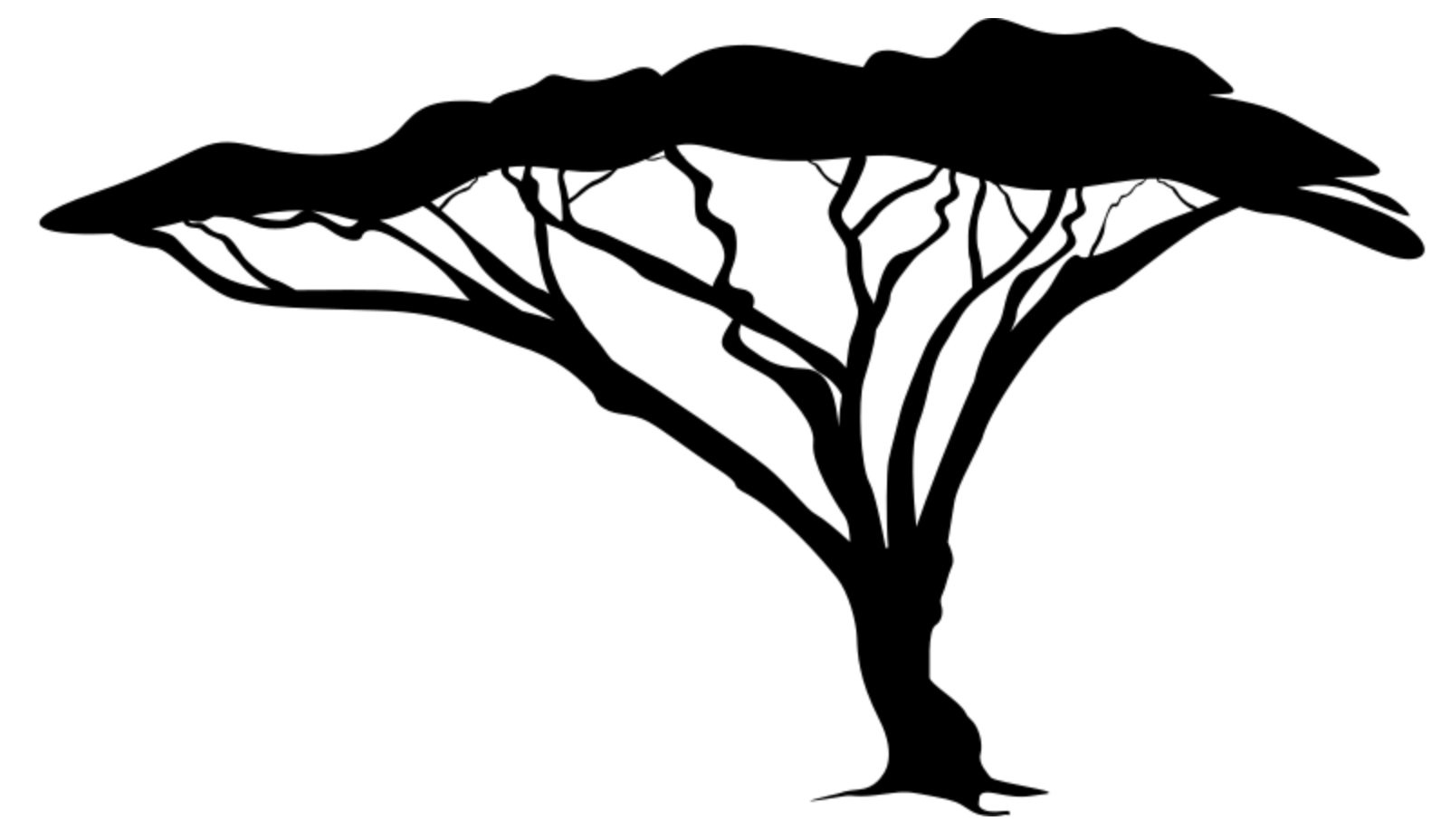
The Kalahari casts a spell upon her visitors – the kind of magic that can only be experienced first-hand. It is partly to do with a sense of space, a true wilderness stretching as far as the eye can see, both untamed and austerely beautiful. Yet, there is an element to the mystery of its allure, creating a tantalising combination of the immediate and the timeless. At the heart of this vast stretch of sand lies Botswana’s rugged Central Kalahari Game Reserve, where travellers can refresh world-weary souls beneath the cool blaze of the Milky Way.
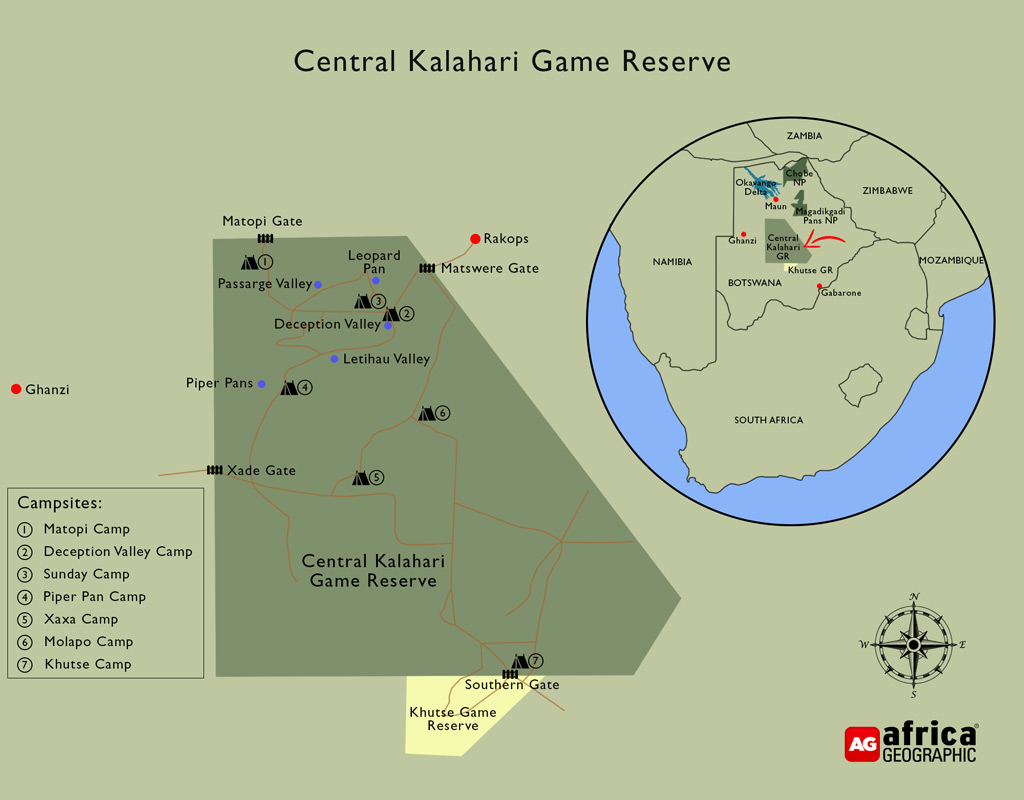
The reserve and surrounds
As the name clearly implies, the Central Kalahari Game Reserve (CKGR) is situated smack in the middle of Botswana at the centre of the Kalahari Basin. Descriptors such as “vast” or “extensive” fail to do justice to the sheer scale of this enormous reserve, which extends over 52,800km² (over five million hectares) of arid bushveld. Along its boundaries, several private conservancies have successfully converted former farmland back to its original state and the protected area is further supplemented by the 2,500km² (250,000 hectares) Khutse Game Reserve to the south.
The word “Kalahari” shares its etymology with “Kgalagadi”, likely drawn from the Tswana word “kgala”, which can be roughly translated to mean “thirst” or “to dry up”. Thus, Kalahari is interpreted as “land of great thirst” and Kgalagadi as “a waterless place”. Whatever the exact translation, the overtones are unmistakable – this is a land devoid of surface water, a harsh and inhospitable wilderness. Yet once again, this fails to encapsulate the complexity of this amazing landscape fully.
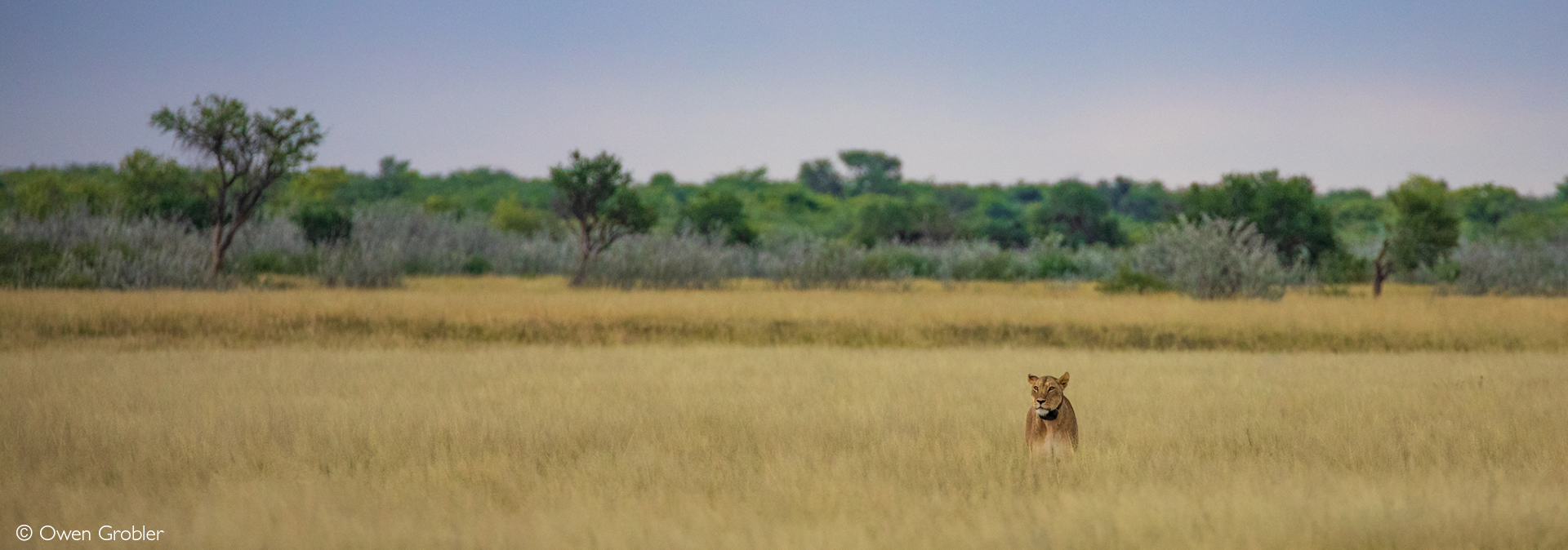
The Kalahari Desert is technically more semi-desert (apart from the far southwestern portion) and encompasses several different types of habitats, including grasslands, scrubland, and rich arid savanna – all of which can be found within the CKGR. Throughout the reserve, there is evidence of a more bountiful time in the Kalahari’s history, when rainfall was more abundant and temperatures a little less extreme. Fossil riverbeds crisscross the reserve, the most famous of which is Deception Valley in the northeast corner, so named because of the mirage created over the surface of the salt pan.

Although the terrain may seem harsh, nature always finds a way to survive, and the CKGR is no exception. Though not necessarily as abundant as the Okavango and Chobe areas to the north, wildlife abounds in CKGR, from herds of antelope to the predators that have learnt to stalk them through the long grasses.
Fundamentals
For the most part, the remote CKGR attracts a certain kind of traveller. These hardy adventurers are the sort prepared for any eventuality, driving 4x4s packed to the brim with equipment, water, fuel and everything but the kitchen sink (and sometimes a makeshift kitchen sink). With the astonishing capacity to set up/dismantle a rooftop tent with the speed and efficiency befitting a Formula One pitstop crew, they revel in the unspoilt peace of the wild. They will readily assist the less experienced with only a faintly detectable hint of smugness.
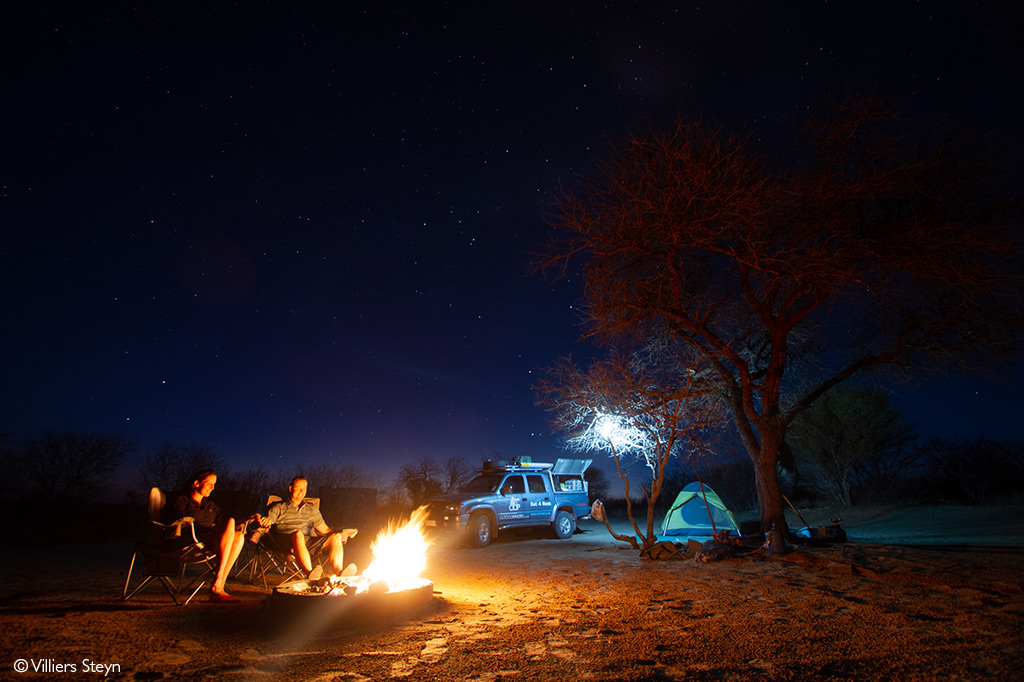
Though it is unnecessary to be such a dab-hand at overlanding, a self-drive stay in the CKGR cannot be approached without meticulous planning. There are no shops within the reserve, and sufficient food, fuel, firewood and water must be purchased beforehand (only one camp has running water, which is not always available). Fuel supplies should be gauged with the significant distances between four entrance gates and the various campsites in mind.
 The roads alternate between thick sand and clay that turns into sludge during the short rainy season. Phone signal is non-existent, and visitor density is extremely low, so it is not uncommon to spend the day exploring without seeing another soul. The northern section of the park tends to be slightly busier and offers greater concentrations of wildlife. This may all sound somewhat intimidating, but the result is more than worth the effort. This is, without doubt, one of the wildest parts of Southern Africa. The immersion in nature is absolute, and it is pretty easy to imagine one has this wilderness entirely to oneself.
The roads alternate between thick sand and clay that turns into sludge during the short rainy season. Phone signal is non-existent, and visitor density is extremely low, so it is not uncommon to spend the day exploring without seeing another soul. The northern section of the park tends to be slightly busier and offers greater concentrations of wildlife. This may all sound somewhat intimidating, but the result is more than worth the effort. This is, without doubt, one of the wildest parts of Southern Africa. The immersion in nature is absolute, and it is pretty easy to imagine one has this wilderness entirely to oneself.
Not much can compare with the experience of sleeping in a tent, with just a slip of canvas between you and the black-maned lion roaring in your campsite – with miles between you and the nearest civilisation.
Still too much? Well, fear not, less intrepid travellers can still experience the magic of the Kalahari without having to worry about being self-sufficient. The reserve and surrounds are peppered with luxury lodges where guests can still revel in the beauty and isolation of the desert — more on this below.
The creatures of the Kalahari
A leonine visit in the middle of the night is a common campsite occurrence in the CKGR, but, as might be expected, there is an element of luck involved in all desert wildlife sightings, particularly where predators are concerned. However, lions, leopards, cheetahs and African painted wolves (wild dogs) are all resident, albeit in low densities compared to some of the northern parts of Botswana.

Elephants can and do move through the reserve. Still, sightings are few and far between, and elephant enthusiasts should visit the Okavango Delta, or head to Linyanti or Chobe National Park for their pachyderm fix. The upshot of this is that CKGR is generally not marketed as a suitable option for the first time or once-off safari-goers looking for the ‘Big 5’ and other iconic safari wildlife. Yet, the African desert never disappoints those who appreciate animal marvels of every shape and size.


Brown hyenas slink through the ancient riverbeds and smaller carnivores like jackals, caracals and honey badgers are always a highlight. The families of bat-eared foxes are a source of constant entertainment, sporting ridiculously oversized ears and somewhat sardonic expressions, while charismatic meerkats forage through the undergrowth. The usual assortment of campsite opportunists – ground squirrels, hornbills, mongooses and spurfowls, for example – are always around and don’t be surprised to find one drinking your shower water next to your feet with zero regard for privacy.

First people of the Kalahari
The Kalahari is the ancestral homeland of various San peoples, the oldest human inhabitants of the region and collectively one of the most persecuted groups in Southern Africa. The Gana, Gwi and Tsila Bushmen (as they have expressly confirmed they prefer to be called) previously occupied the now CKGR region as nomadic hunter-gatherers. In fact, the reserve was initially established as a “place of sanctuary” for them during the 1960s.
However, a campaign to relocate the inhabitants began two decades later, culminating in forced removals to “resettlement camps” outside the park during the mid-1990s. The move was “justified” on conservation grounds but coincided with the discovery of diamonds in the southern section of the reserve. Though some of the Gana, Gwi and Tsila people have since won their legal battle to return to their ancestral homeland, returning to their old way of life has proved next to impossible. The legal conflict continues to this day in one of the most expensive court cases in Botswana’s history. (For a brief account of some of their hardships, read about the struggle of the Kalahari people.)

One of the highlights for many travellers is to spend time with Bushmen, tracking or learning more about their cultures and traditions. The Gana, Gwi and Tsila Bushmen have a deep and intimate connection to their homeland, and these experiences can be highly educational. Though a complete account of the land conflict in Botswana is beyond the scope of this article, it is beholden upon visitors to bear this context in mind when visiting the reserve and interacting with those who call it home. It is also essential to research the various cultural programmes on offer to ensure that the Bushmen guides receive the proceeds of this tourism-generated revenue.
Desert Rose
Though there are no roses in the Central Kalahari Game Reserve, the desert does bloom once a year. The fauna and flora of the Kalahari are all beautifully adapted to survive the pulse of the desert seasons, patiently awaiting the arrival of the rains. As storm clouds gather and lightning scythes through the sky, there is almost a palpable sigh of relief from the parched earth and inhabitants. The transformation is almost immediate and utterly breathtaking. The plants seize their chance before the greedy sand soaks up the water, bursting into life, covering the red dunes in shades of green and yellow.
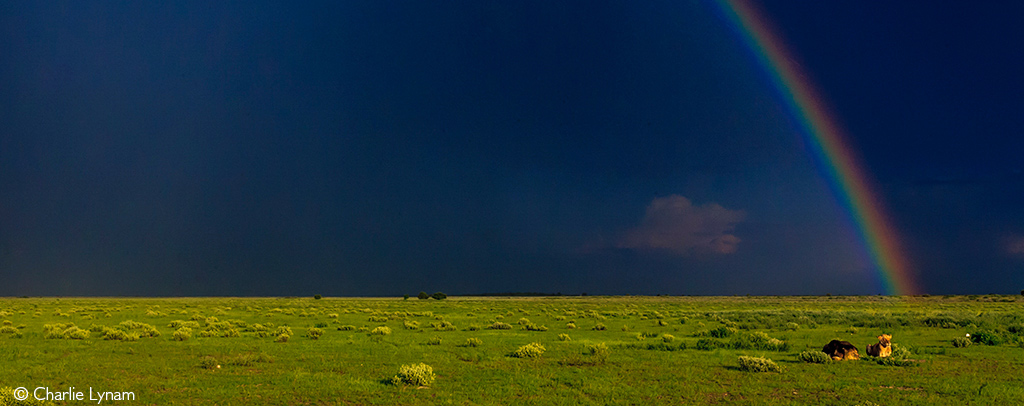
The salt pans of the north fill with water, and the herbivores gather in large numbers around the surrounding grass plains, forming impressive herds of giraffe, wildebeest, zebra, oryx, impala and springbok. Many give birth during the height of the green season, much to the delight of tourists and predators.
Explore & Stay
Want to go on safari to Central Kalahari Game Reserve? To find lodges, search for our ready-made packages or get in touch with our travel team to arrange your safari, scroll down to after this story.
Very unusually, this desert rejuvenation means that the rainy season (between November and March) is the best time to visit the Central Kalahari Game Reserve or surrounding private conservancies. Though the afternoon thunderstorms can be disruptive to plans, they do help to take the edge off the summer heat. The only downside is that the clay soils turn into sludge, making driving conditions somewhat tricky. As expected, temperatures can be extreme, with boiling days and very chilly nights, especially during the dry season.

There are several very basic campsites spread throughout the park, divided into state-run campsites and others that are privately operated. Generally, there is a trade-off between price and state of cleanliness/infrastructure that can be easily inferred from the above distinction. The luxury lodges offer the perfect alternative for those less keen on the necessary planning and potential pitfalls of self-drive. Of course, one of the significant advantages of going the lodge route is that the heat of the day can be spent dipping in and out of swimming pools looking out across the spectacular desert scenery!


Resources
A first-hand account of camping in CKGR – Camping in the Central Kalahari
Stunning photo gallery – The Dark Side of the Kalahari
To comment on this story: Login (or sign up) to our app here - it's a troll-free safe place 🙂.![]()




